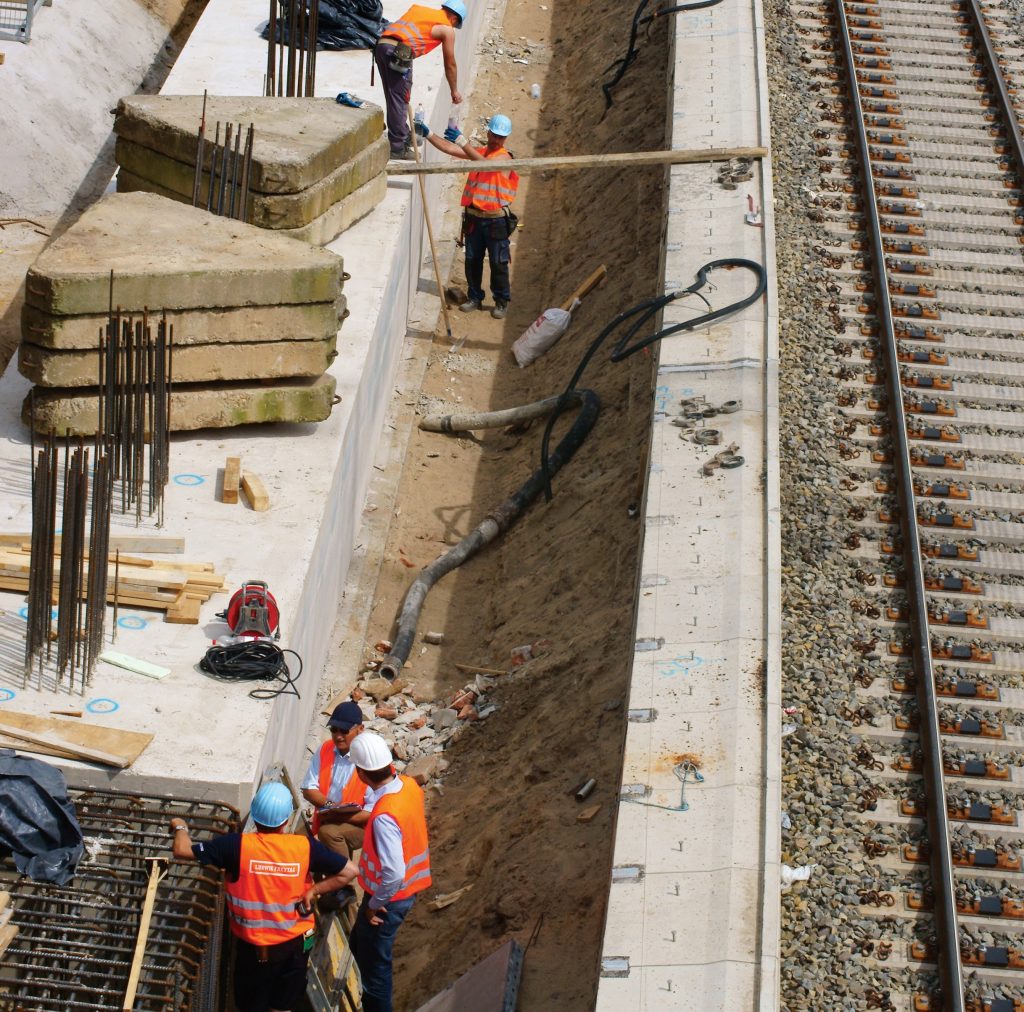“The importance of construction project financing has grown significantly over the years, especially with the lineup of large-scale developments and affordable housing. In this article, Stanley Chin—the principal of Stanley Chin QS Consult—elaborates on the common methods used by contractors in obtaining loans to bridge the period between making expenditures and collecting payments.” BY STANLEY CHIN
Over the last 20 years, we have seen considerable growth in the size of projects in Malaysia. In the 1990s, project value in the region of RM100 million was considered relatively large. However, with an average GDP growth rate of just under 5 percent annually and the construction industry contributing an average RM11,000 million annually to the GDP during the same period, project value in the region of RM500 million and above is quite normal these days. In view of the large-scale construction projects faced by contractors, construction project financing has become significantly more important.
Construction project finance essentially entails the contractor obtaining funds to bridge the time between making expenditures and obtaining payments from the owners of the development. Under most standard building contracts, the contractor is paid progressively throughout the project and is required to submit progress claims to the consultant on a regular basis. The consultant assesses each claim on the basis of the work undertaken, the labour and materials used and any other construction costs in accordance with the construction contract, and proceeds to issue a progress certificate that states the amount calculated by the consultant to be due to the contractor at the time of issue. The contractor would receive a monthly progress payment certificate with some form of retention sum included as the project progresses from the consultants, and the developer’s payment of the certification usually lags one month after receiving the certificate from the consultants. Thus, at the beginning of the construction contract, the contractor would incur at least two months of expenses before receiving the first payment from the developer, with subsequent progress payments being made by the developer on monthly intervals after that.
It is this delay in receiving the payment—incurring the expenses first and confronting whatever sum is retained via the retention sum, which is usually paid at the end of the construction—that needs to be financed by the contractor. Getting paid on time is also always a challenge, as many contractors cannot wait very long for their payment. They are usually required to be paid sooner rather than later in order to pay their suppliers and employees.

The common ways for a contractor to bridge this expenditure and receipts of payment are through project financing loans, which are typically the following:
1. Term loan
2. Overdraft facilities
3. Letter of credit
4. Bank guarantee
5. Progress claim financing
TERM LOAN
A term loan is basically a commercial loan. They carry a fixed interest rate and monthly or quarterly repayment schedules, as well as a set maturity date. Funding is made either at pre-established stages, completion, or upon submission and approval of invoices substantiating construction bills.
The best use of a term loan is for construction, major capital improvements; large capital investments such as machinery; working capital; purchases of existing businesses, as it can be used to leverage construction companies with strong financial statements; and substantial down payments to minimise monthly payments and total loan costs. Repayment is typically linked in some way to the item financed. Term loans require collateral and a relatively long and difficult approval process, but it can help to reduce risk as it is a relatively cheap source of financing.
OVERDRAFT FACILITIES
An overdraft is the most common form of loan in the construction industry. Essentially, it is a type of revolving loan where deposited funds are made available for reborrowing, whereby interest is charged only on the daily overdraft balance. Typically a bank extends credit up to a maximum amount called an overdraft limit against which a current account holder can make payment or withdrawal for construction bills.
If the overdraft is secured by an asset or property, the bank has the right to foreclose and call on demand on the collateral in case the contractor does not pay. Call on demands of the collateral usually happens when the contractor’s credit rating falls, the bank has reason to believe that the contractor may go into default, or the contractor has not ‘revolved’ the overdraft in a satisfactory manner and has turned it into a hardcore debt.

LETTER OF CREDIT
A letter of credit is an obligation by a bank to make a payment to a supplier once certain criteria are met by the contractor. Once these terms are completed and confirmed, the bank will transfer the funds to the supplier. This ensures the payment will be made as long as the services are performed. In Malaysia, letters of credit are usually used for the delivery of lift equipment. The lift equipment supplier may request that the contractor or developer obtain a letter of credit before the transaction occurs. The contractor or developer would purchase this letter of credit from a bank and forward it to the lift equipment supplier’s bank. This letter would substitute the bank’s credit for the contractor or developer, ensuring correct and timely payment, as well as eliminating the risk that the lift equipment supplier will not be paid. Letters of credit have become very common in international commerce, as distance and other factors make it difficult for sellers to establish the creditworthiness of every buyer.
BANK GUARANTEE
A bank guarantee, like a line of credit, guarantees a sum of money to a beneficiary. Unlike a line of credit, the sum is only paid if the opposing party does not fulfil the stipulated obligations under the contract. The other party in a contract can use this to essentially insure a buyer or seller from loss or damage due to non-performance.
A bank guarantee is typically used when a contractor, who obtains goods from a supplier, runs into cash flow difficulties and is unable to pay the supplier. As such, the bank guarantee would pay an agreed-upon sum to the supplier. Similarly, if the supplier is unable to provide the goods, the bank would then pay the contractor the agreed-upon sum.
Essentially, the bank guarantee acts as a safety measure for the opposing party in the transaction.
PROGRESS CLAIM FINANCING
Progress claim financing is a specialty type of debtor finance. It allows the contractor to finance invoices that are paid on a progressive basis by the developer. Once the contractor raises the invoice, the contractor need not have to wait for the developer’s payment. Instead, the contractor finances the invoice and receives immediate funds from the bank. The benefits to the contractor’s cash flow are immediate.
Typically, progress claims financing are financed in two separate payments; the contractor will obtain the first payment once the contractor raises the invoice with the developer. This initial payment typically covers about 70 percent of the value of the invoice. The second payment—the remaining 30 percent after bank charges—is deposited to the contractor’s bank account once the developer pays the invoice in full. In such an arrangement, the contractor keeps a stable cash flow, which enables them to manage their contracting business more effectively.
CONCLUSION
In light of the tight monetary policies that Bank Negara has put in place—which will not be relaxed for the next two to three years—there will be less medium-high to high-end projects being launched. The bread and butter projects in the form of PR1MA and other private forms of affordable housing will be the main staple in Malaysia. All these projects will be massive: PR1MA has 20,000 units in the pipeline, and consortiums bidding for each project that is valued in the region of RM900 million to RM1 billion and delivering more than 900 units. Thus, it is imperative for the contractors, subcontractors, suppliers and the like in the construction sector to have in place proper project financing at the onset of the project.

 STANLEY CHIN has over 25 years of relevant professional quantity surveying experience in the industry. His strengths include tender and contract procurement strategies, cost analysis, quantity analysis, cost planning, cost control and value engineering management. He commenced his career in property development and quantity surveying with WT Partnership in Perth, Western Australia. He brings an international perspective to the firm, having trained in Australia and obtained international work experiences in the Republic of Seychelles; Hirafu, Japan; and Hanoi, Vietnam. He is a good standing member of the Royal Institution of Chartered Surveyors (RICS), Australian Institute of Quantity Sur veyors (AIQS), Board of Quantity Sur veyors Malaysia (BQSM), The Institution of Surveyors, Malaysia (ISM), International Cost Engineering Council accredited and The Malaysian Institute of Arbitrators. His combination of experience and expertise enables him to afford clients his knowledge in the critical aspects of estimating, life cycle costing, tendering, contract placement/review, post-contract control and project monitoring.
STANLEY CHIN has over 25 years of relevant professional quantity surveying experience in the industry. His strengths include tender and contract procurement strategies, cost analysis, quantity analysis, cost planning, cost control and value engineering management. He commenced his career in property development and quantity surveying with WT Partnership in Perth, Western Australia. He brings an international perspective to the firm, having trained in Australia and obtained international work experiences in the Republic of Seychelles; Hirafu, Japan; and Hanoi, Vietnam. He is a good standing member of the Royal Institution of Chartered Surveyors (RICS), Australian Institute of Quantity Sur veyors (AIQS), Board of Quantity Sur veyors Malaysia (BQSM), The Institution of Surveyors, Malaysia (ISM), International Cost Engineering Council accredited and The Malaysian Institute of Arbitrators. His combination of experience and expertise enables him to afford clients his knowledge in the critical aspects of estimating, life cycle costing, tendering, contract placement/review, post-contract control and project monitoring.

 Hong Kong
Hong Kong Singapore
Singapore Indonesia
Indonesia Tiếng Việt
Tiếng Việt ประเทศไทย
ประเทศไทย








